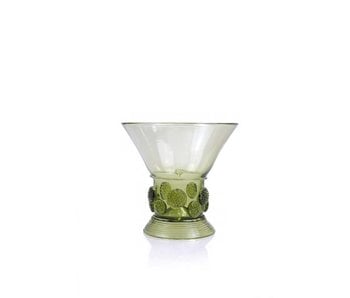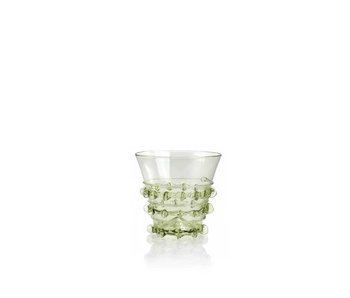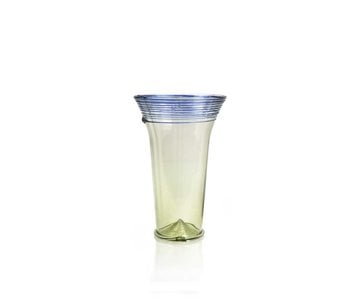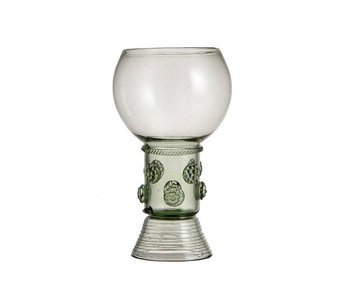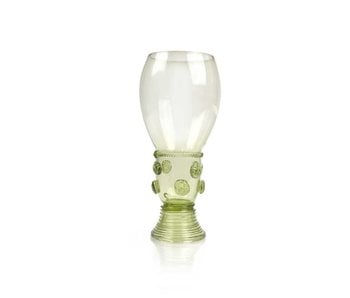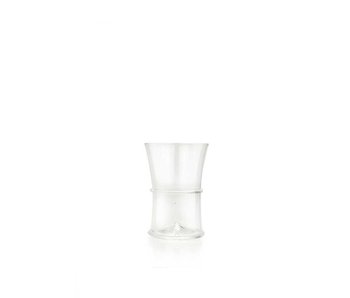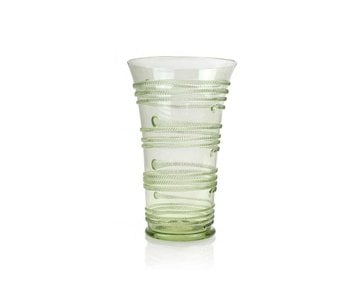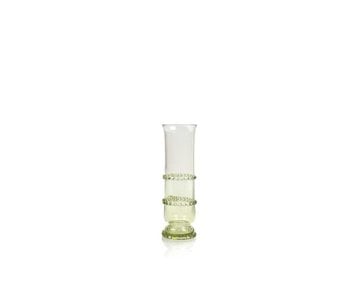We sell hand-blown glassware in our museum webshop. These glasses are replicas of (drinking) glass models that were used in the 16th and 17th centuries and are depicted in many paintings by old masters. The glass comes from Eastern Europe and is still blown by hand.
The glass houses or Hütten, where these were blown, were located in the northern forests of Europe at the time. The wood from the trees provided fuel for the fire in the furnaces in which the material was melted. In addition, the ash from the burnt wood, the so-called "potash", was again one of the ingredients of the glass, in addition to the sand of course. The sand from that region contained iron, which gave the glass that typical green color. The potash was carefully crushed, mixed with copper oxide, enhancing the glossy green hue. Since firing with wood only reached an uneven and relatively low temperature (± 800 C), so that the material did not become completely liquid, it was very difficult to blow a perfect glass.
This explained the characteristic air bubbles and bumps in the glass. The main glass products were initially very large drinking cups for beer, sometimes weighing up to 4 kg. All over the surface there were small pointed bumps called studs or burrs that provided a good grip while drinking. Since at that time there was hardly any food with cutlery or napkins, people soon had greasy hands. Later the drinking glasses became more refined and the studs also served as decoration. The rummer made its appearance, leaving the top of the glass smooth and the buttons only being applied to the hollow bottom or trunk, which ensured a good grip. Under the base of the glass you will see a rough curve. That's where the glass has stuck to the tube, blowing it. The glassware is largely mouth blown, but sometimes molds are also used, eg to get a twist or an angular shape in the glass.
Although natural gas is now used in the Czech Republic, which facilitates production, glass blowing is still a very labor-intensive process, where 2 people are often busy with one glass. One blows the glass, while the other applies the decoration. To give the glass the historical look, a special technique is required, which only the true craftsman has mastered.
The production is therefore low: 40 to 50 glasses per day. The art of glass blowing has been passed down from father to son for generations and every family has its own secrets. The glasses are all unique because they are all made individually.











